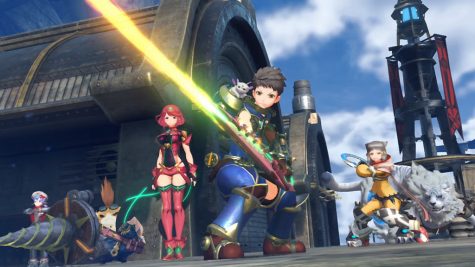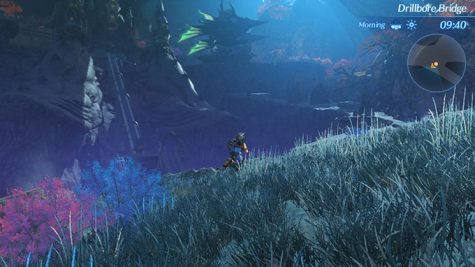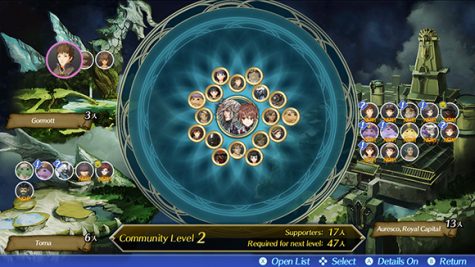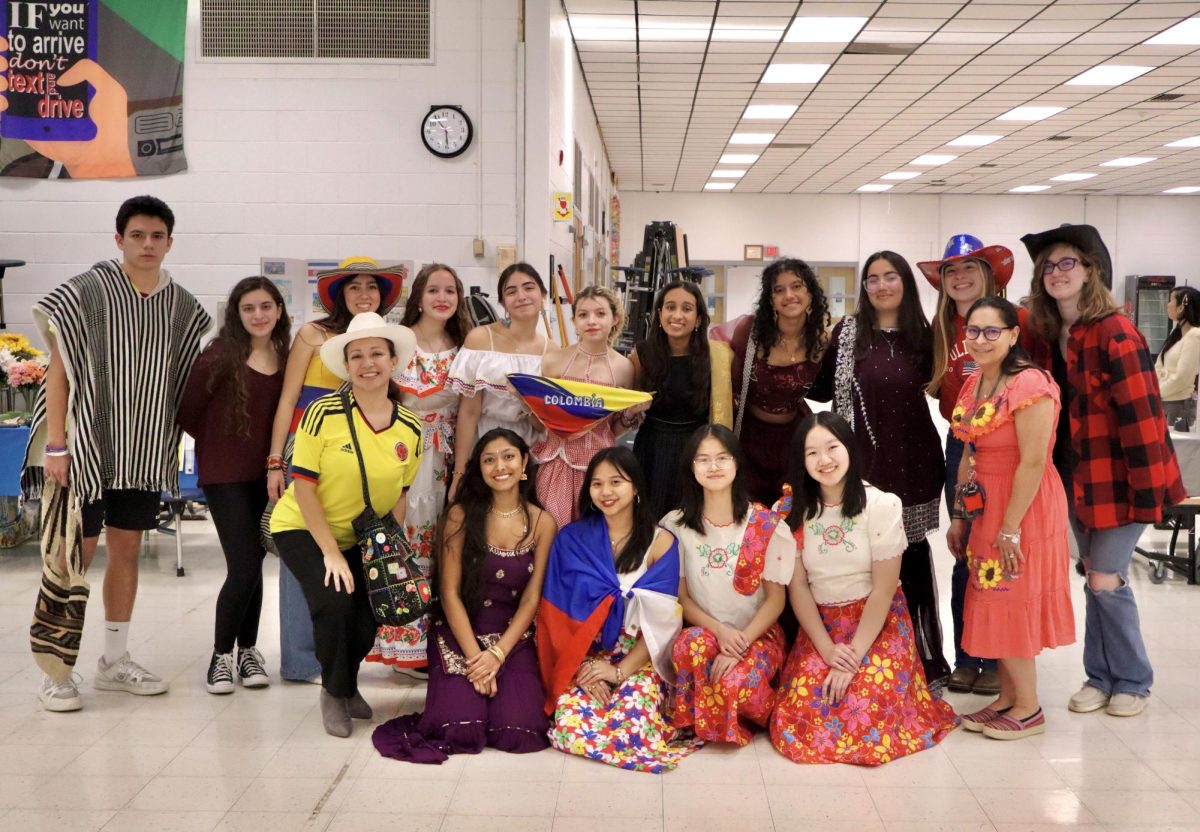Xenoblade Chronicles 2 Review
October 22, 2018
Enter Xenoblade Chronicles 2 in the world of Alrest, a land where people live on beings called Titans, which roam about in an immense Cloud Sea. Alongside humanity are Blades, who are sentient beings that are bound to people, referred to as their Drivers, as they resonate with core crystals. In the middle of it all, the World Tree provides the gateway to the Architect, the creator of the world, and Elysium, a paradise where humanity can be saved when the Titans begin to die.
The story begins with a young salvager named Rex, who is recruited to assist in the retrieval of a ship that has been lost to the depths of the Cloud Sea. Upon doing so, he stumbles upon and bonds to a Blade named Pyra who wishes to travel to the fabled land of Elysium. This sets the premise for the game, which explores the adventures of Rex and his newfound Blade, as they seek out this paradise in search of solutions to humanity’s problems.
The narrative begins with a simple premise, that over time, increases in complexity as you explore the numerous Titans inhabiting Alrest, take on numerous side quests that expand upon the world and its people, and get invested into its enthralling story. It should also be noted that the plot does not require for one to have played the previous entries. It works perfectly fine as a standalone game, from start to finish. However, towards the end there is a reference to the first Xenoblade Chronicles that will add to the player’s experience if they are familiar with the events of it, but it wouldn’t spoil the game in any way.
Xenoblade Chronicles 2 is a JRPG that is presented with a less realistic anime art style, contrasting the games that came before it. This was upsetting to some returning fans, but it also adds a distinct charm which adds to a few of the game’s intriguing moments. The English version of the game also features voice work that might initially take some getting used to, but remains mostly excellent, except for a select few moments where it becomes cheesy; however, this does not occur frequently enough to become a pertinent issue. For those who would prefer to listen to the original Japanese voice artists accompanied with subtitles, there is an available option to access this as free downloadable content. The game also features an incredible soundtrack that was composed by Yasunori Mitsuda, consisting of powerful orchestral pieces that effectively sets the tone for its numerous locations and battles. It contains more tranquil songs, such as the theme of Uraya, as well as the more energetic tunes in Mor Ardain and Tantal.
The gameplay has players assume control of Rex or one of the other Drivers who accompany him on his journey and switch between them at will, as long as they are in the party, as they explore the

Titans of Alrest on their journey to Elysium. Of the playable drivers in the party, only three can be active at any given time and each of them can have three equipped Blades to be switched between in battle, or on the field. There are three main classes of Blades: Attack, Tank, and Healer, and using different combinations of these will affect the Driver’s stats. Combat consists of Drivers being in the front while being supported by their Blades with blade arts which act as buffs. The most basic damage comes from Auto Attacks which charge up driver arts. These deal more damage and when used in the proper order will initiate driver combos. These are done by used by using driver arts that inflict status effects in the following order: Break, Topple, Launch, and Smash. During this sequence the enemies will be stunned until smash is inflicted, and completing one of these combos will deal large amounts of damage and drop healing items. Lastly, there are specials which are charged by using driver arts, which features Drivers and Blades passing their weapon between one another. Specials can be used in succession to perform blade combos, which will spawn elemental orbs that can extend a chain attack between the three participating drivers. Experience is shared by the whole party of Drivers, even if they are not used in a battle which makes it so you don’t have to worry about evenly leveling everyone. Blades do not level up in the same way as drivers, but they have affinity charts which will be filled out gradually as you complete the designated objectives, and doing so will improve each Blade’s unique attributes and abilities.
[wpdevart_youtube]6tQDoCrQIek[/wpdevart_youtube]
Over the course of the game players will acquire core crystals which are used to obtain new Blades through resonance. This mechanic brings about one of the more frustrating issues in the game as through these players have a random chance to get special, rare Blades. There are also more generic Blades that can prove useful, but for those who wish to obtain all of the rare Blades, note that it could be time consuming as you will likely have to farm for core crystals for a chance at getting the ones you are missing in the later parts of the game. Not all rare blades are obtained through this method as some side quests or points in the story will drop special crystals associated with a particular blade, but most are dependent on random chance. The game will not require these blades to beat the game and only the ones that pop up during the story, but they can be immensely helpful in battle. Each rare Blade has a unique side quest involved in completing their affinity charts that will expand on their characters and personalities.
While exploring the world, there are areas that will be inaccessible without the assistance of the numerous Blades that you will acquire over the course of the game. Blades each have access to different field skills that are necessary to manipulate the environment, allowing you to further traverse it and obtain items or find other locations. Depending on what you are trying to use these skills on you may need to have multiple Blades with the same field skills in order to attain higher levels of that skill.

Since the its release in December 2017, it has received regular updates that have been adding more content to a game that is already huge. They also added a New Game Plus mode in which all of your items, Blades, and levels are carried over as you play through the game again, now with the ability to obtain new Blades that are not normally obtainable. In conjunction with this, there is an expansion pass available for digital purchase that gives access to even more content. With the expansion pass, players are able to receive item packages that have been periodically added, which would give access to new Blades, core crystals, items, and side quests. There was also the addition of a challenge mode which consists of difficult arena battles rewarding players with the ability to purchase cosmetic items for the party and their signature Blades. The continuous additions to the game are effective in keeping players interested, which adds more of a reason to keep playing the game after finishing its story.
Xenoblade Chronicles 2 is available on the Nintendo Switch and the base game has an engaging story, fun gameplay, and a memorable cast of characters. It features a ton of content that will last for countless hours, along with frequent updates and replay value. The expansion pass that can be purchased digitally has been consistently adding more side quests and goodies for players to keep playing and enjoy. For those who enjoy the JRPG genre, this game brings a great amount of content that certainly justifies the combined price of the base game and its expansion.
Torna DLC Review:
Xenoblade Chronicles 2 also includes a brand new DLC prequel, Torna the Golden Country, and an expansion pass for $30. Torna the Golden Country is essentially a completely new game which takes place 500 years before the events of the main game and sets up the events that will come after; however, the developers point out that on a blind playthrough, it is recommended that the prequels is played between chapters 7 and 8 of the main game.
Torna the Golden Country also has a excellent new battle system that builds upon the original game. The main machachics between Driver and Blade are essentially the same, but in Torna the Golden Country, you can now switch the driver and blade in rear guard v. vanguard positions; this opens up a lot of new, interesting options. Everytime you switch, you perform one set of a driver combo; for example, switching out Jin, one of the Blades, into the vanguard position will topple the enemy if the enemy is in a “break” state. Drivers and their bonded Blades also share the same HP pool, which opens the idea of recoverable HP. When a Driver takes damage, the damage lost will be in a red bar, but if you switch positions with your Blade, the damage is immediately recovered. Drivers can help in Blade combos now and gain an element based on their weapon, so in this way, the main strategy is to change in order to get another tier into the driver combo and blade combos while switching before you take too much damage and recover your HP back.
The graphics and exploration also have a overhaul as well. The grass and character models, for example, seem more realistic while still having the same style as XC2. In addition, you can get Gormott, a titan location from the main game in a “past setting”, which gives some references to recognizable landmarks and locations. However, for the majority of the expansion, you are playing on Torna, a new Titan with different environments, such as a forest, a desert, and even a major capital city. The areas are more “sandbox-like” in the expansion, though; the areas were relatively smaller compared to the original game, but side quests gave us the motivation to go out and explore.

The side quests, unfortunately, are the Achilles heel of the expansion. The expansion can be completed in as little as 12 hours, but the main story might only take up half of that time. The side quests are bought into this new feature, called a “Community Level.” Every time a side quest is completed, one or more people will be brought into the community; the more people you have in your community, the higher its level and the more side quests are available. However, unlike the original game that allowed you to do side quests at your own pace, Torna the Golden Country halts the adventure for at least 2 hours right at the very end and demands that the community is maxed to a certain level. This is obviously padding, and it is unneeded as it halts the pace right before the final battle.
Finally, the music is a high note. While most of the songs are reused in some form from the original game, the new themes add a jazz element to the score and are all excellent. Most notably, the new battle theme is extremely catchy and with the new battle system, fighting enemies has never been more enjoyable. In addition, the remixed “Gormott” theme adds value from the original with the supply of the said jazz beats and new tunes.
In conclusion, Xenoblade Chronicles 2 offers more than 300 hours of gameplay to your fingertips. Its story, characters, gameplay, and overall presentation make it a standout modern RPG, and one to be remembered for a long time.
Overall Score: 9.7/10














































